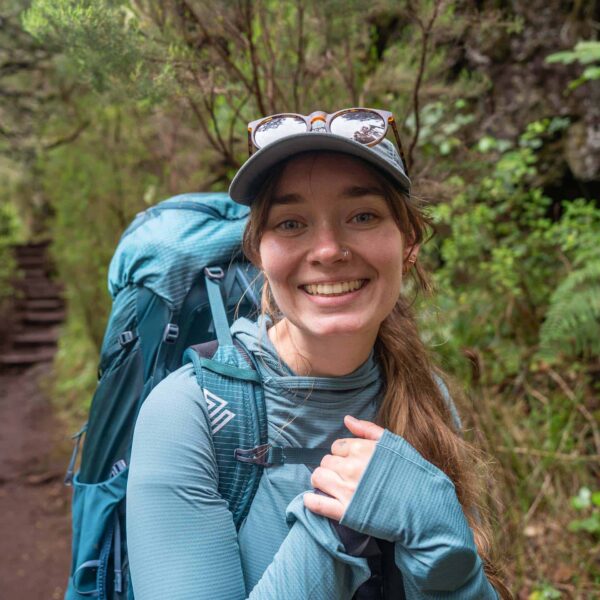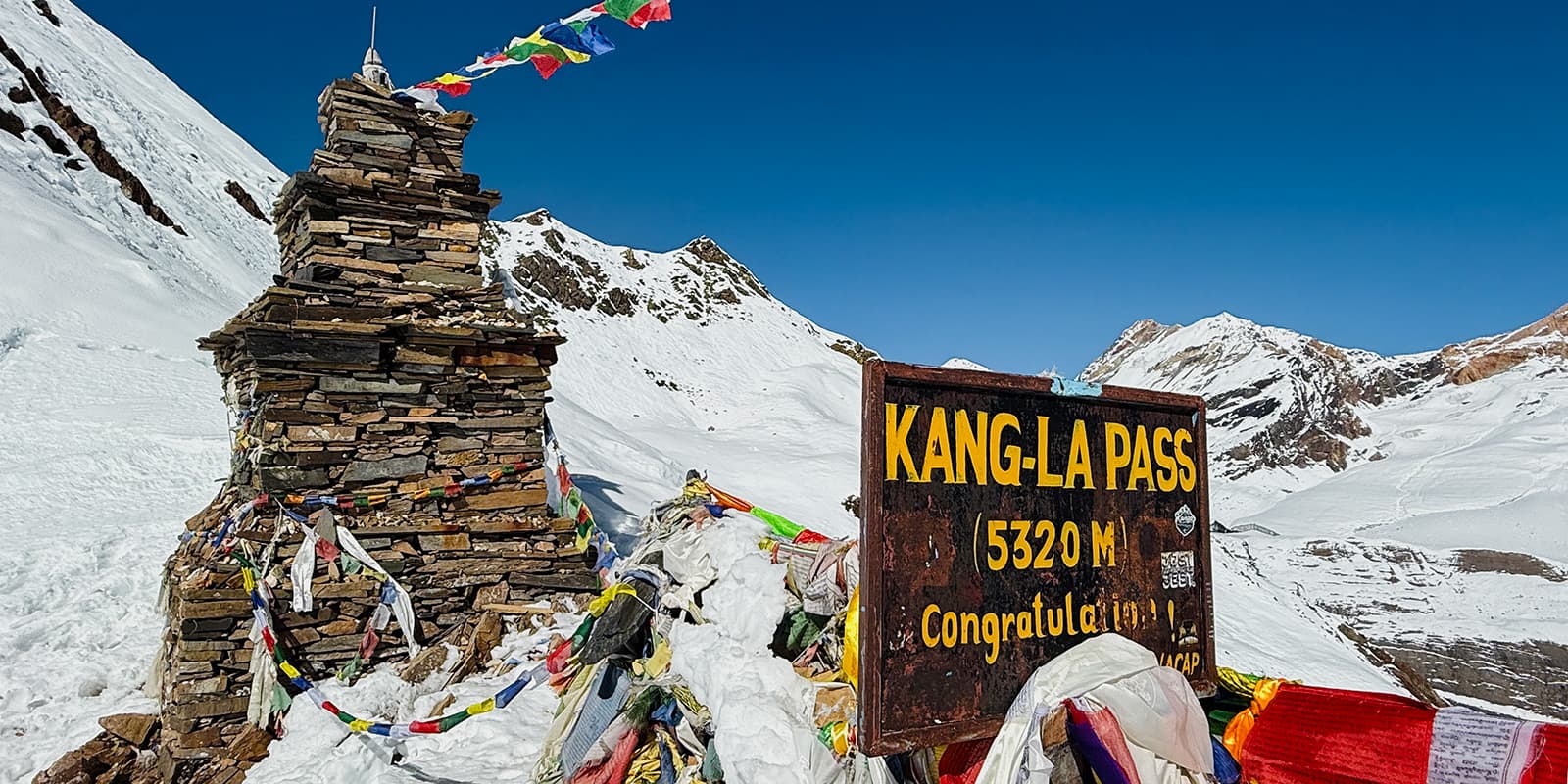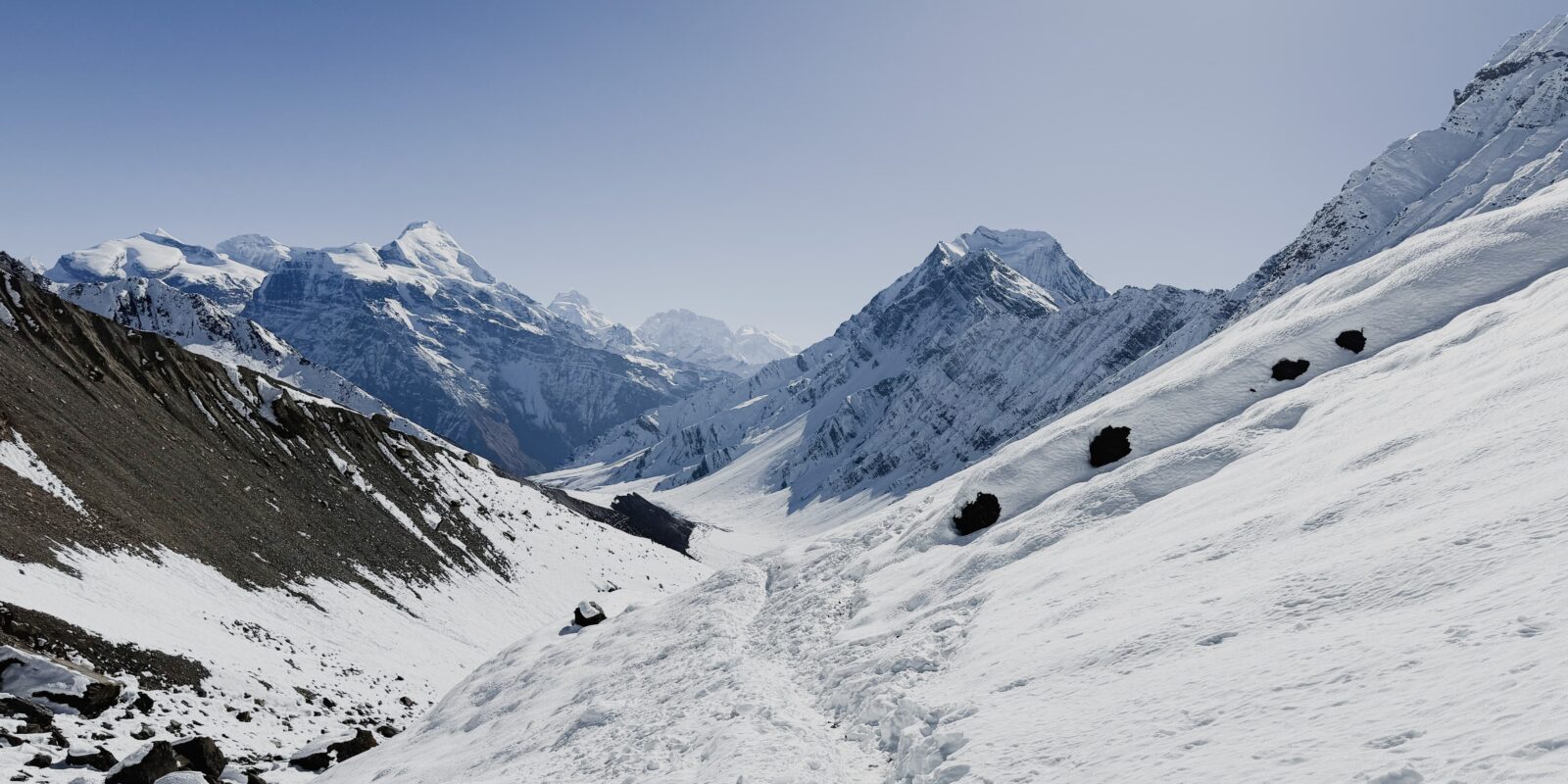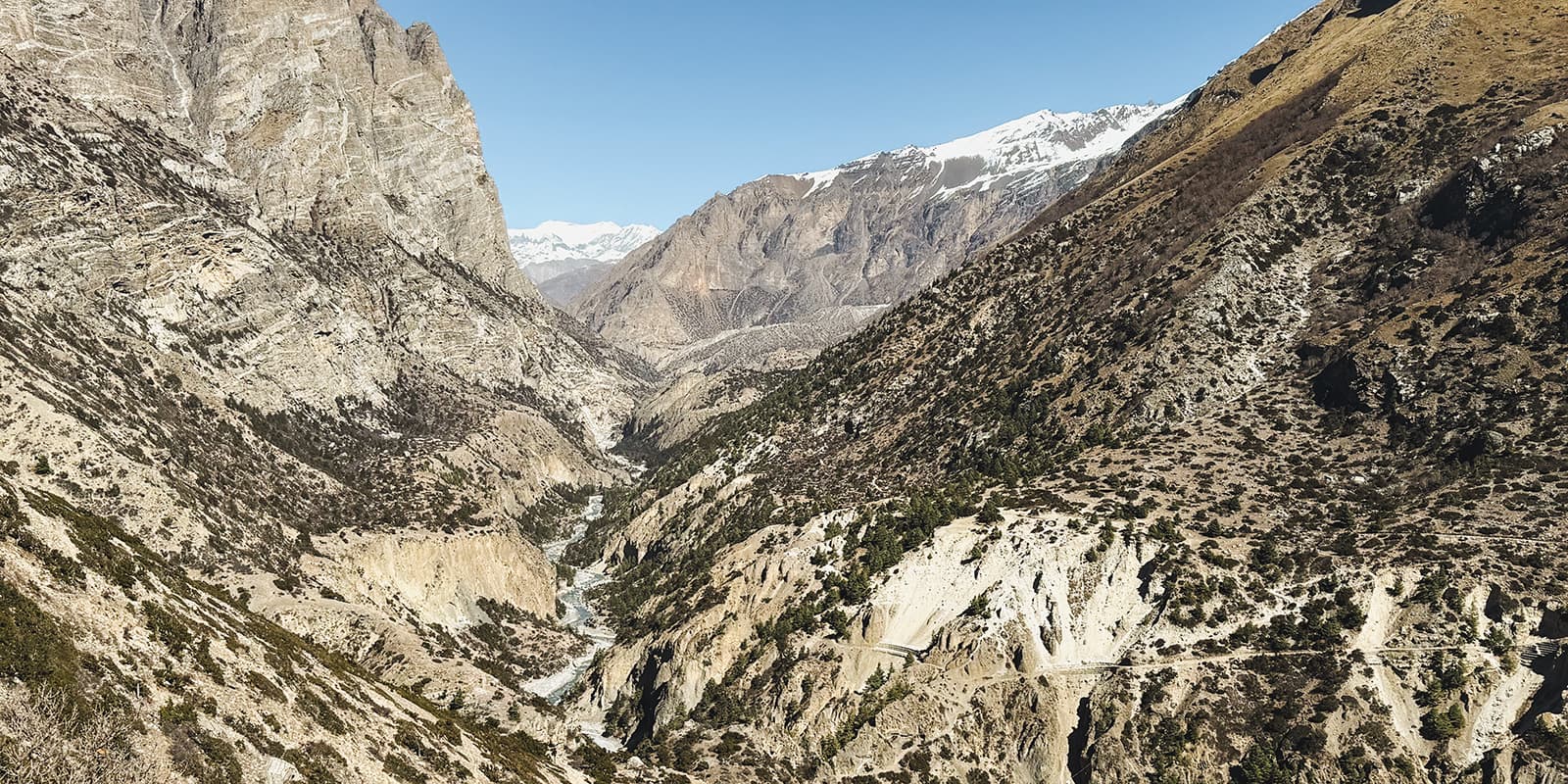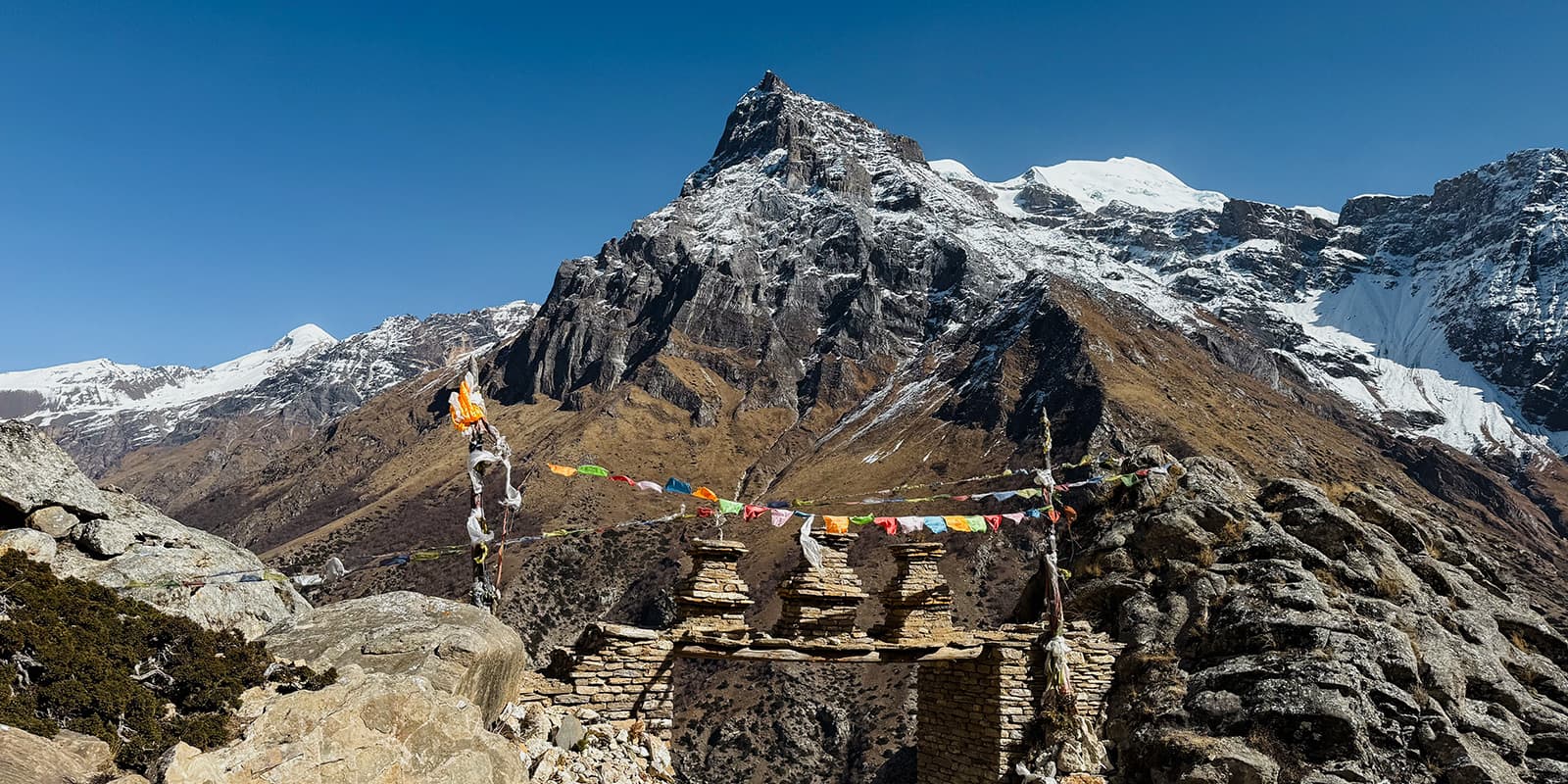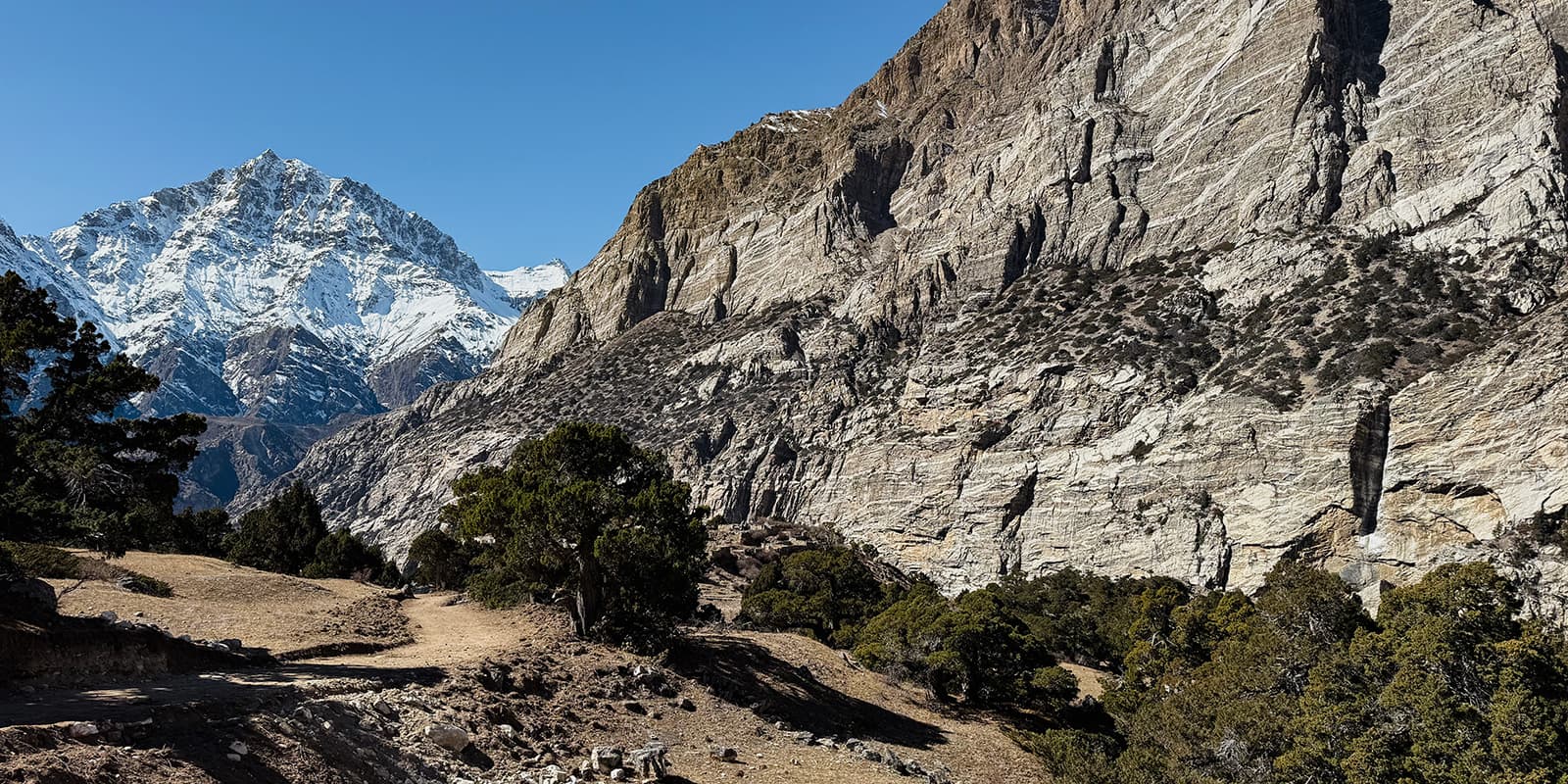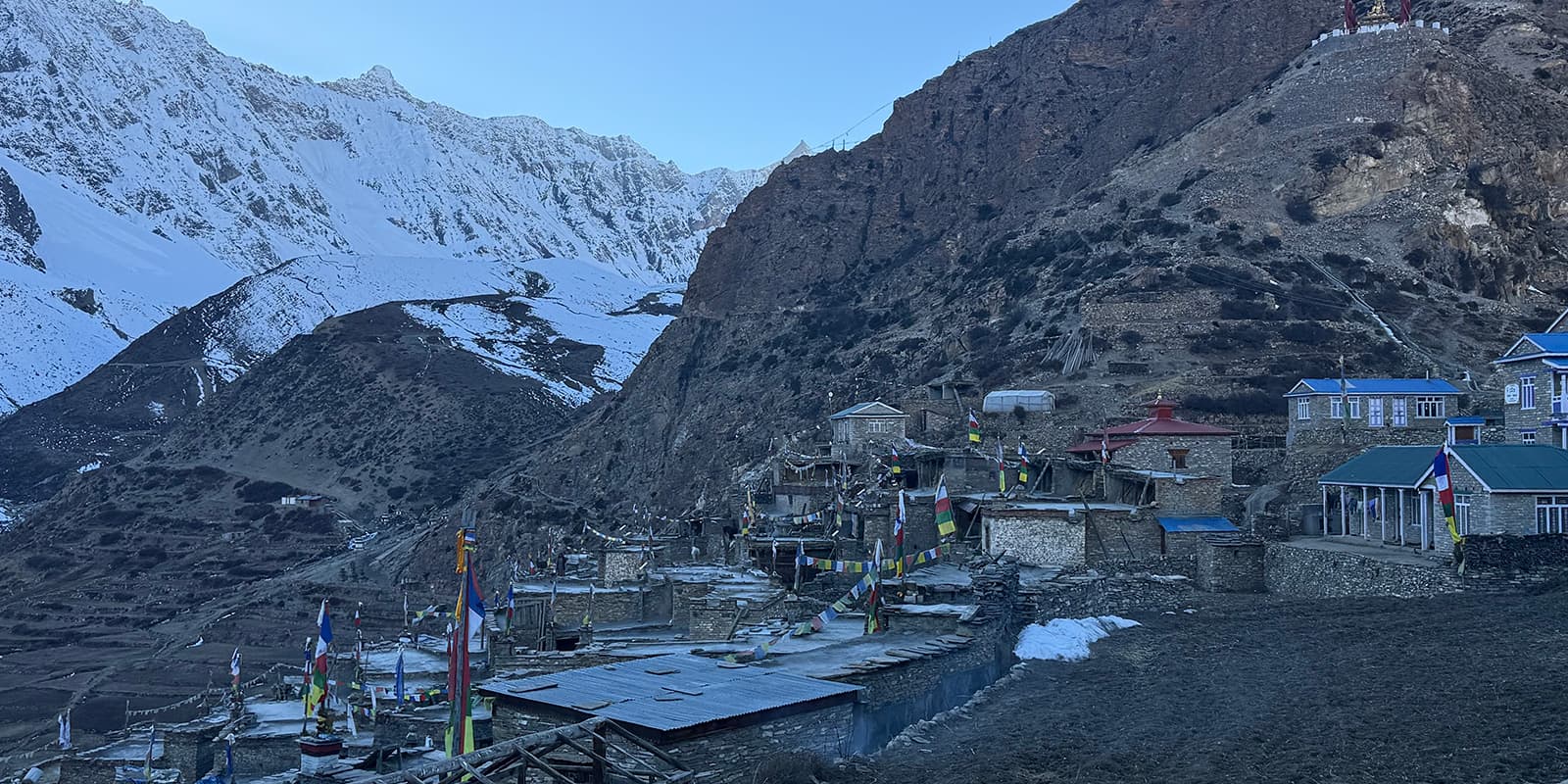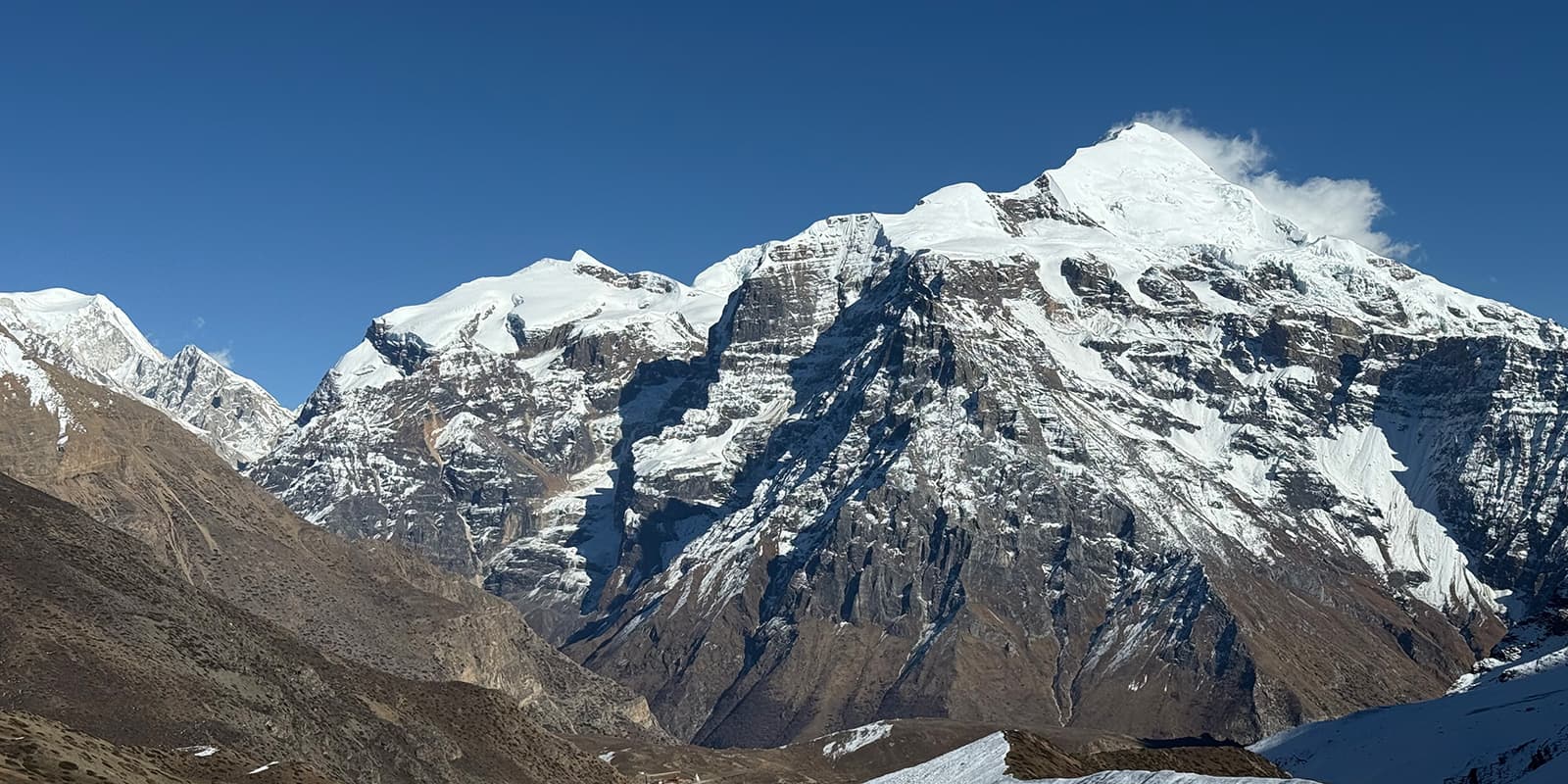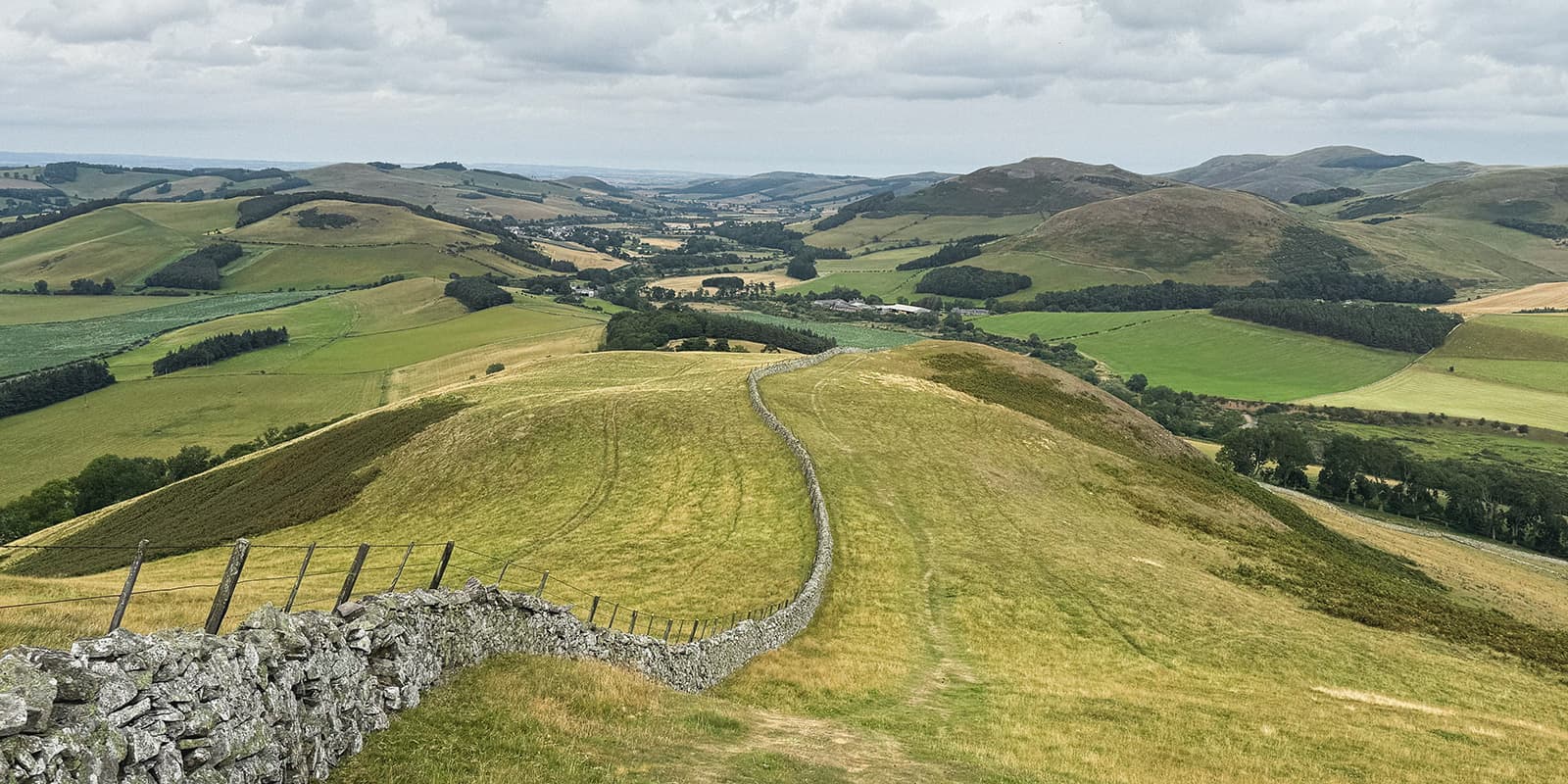At the Kathmandu airport, you will see the option to get a NCell SIM card for your phone. Skip this, and instead get a Nepal Telecom SIM card, as these have the best signal in the mountains.
For trekking in the Nar Phu Valley, you are required to have a guide with you and need to purchase Restricted Area Permits (RAP) for the region, as it is a protected area. It is also important to understand how to get to Nar Phu Valley, as it adds another full day (or two) on each end of the trek.
Permits
The Restricted Area Permits are $100 USD per week that you’re in the valley and can be registered in Kathmandu or Pokhara. If you choose to stay longer than a week, you will pay an extra $15 USD/per day that you’re in the valley. The time begins ticking on these as soon as you arrive in Koto, and will be registered with the municipality on your drive in. Work with your guide ahead of time to procure the permits, as they can take a few days to process and cannot be arranged by individuals.
You will also need to register for the Annapurna Conservation Area Project Entry Permits ahead of time. These can be done by individuals, although your guide can give you advice if you’re confused about the process. If you don’t register for them online, you can also get them in Kathmandu when you arrive. The Annapurna permit costs roughly $25 USD per person and is easy to procure. You just need to bring a passport-sized photo, which you can have taken for you anywhere in town if you don’t have one with you, and bring cash along with your itinerary to the Tourism Board Office; they accept USD or Rupees.
Guides
You also must have a guide with you while hiking in the Nar Phu Valley as part of the protection policies in place. However, having a guide is quite helpful. Because it is so remote, they can answer your questions, help you speak with the locals at the tea houses, and negotiate a good rate.
You usually pay a flat daily rate for your guide upfront for the entirety of the trek. Your guide will then pay for their own lodging and food throughout the duration of your trail, while you pay for your own as you go. The only things you need to pay for, for the guide, separate from their day rate, are any transportation to the trailhead and lodging on the way, as well as their permits while in the Nar Phu Valley. Of course, tipping is also normal and expected in the region; usually $10 USD per day per guide/porter is an acceptable amount to tip at the end of your trek (if you were happy with it!).
We arranged our guide through By Mountain People, a trekking company that has its roots in the Netherlands and is run by a Dutch-Nepalese couple. Their guides speak great English, they’re well-organized and very professional. Additionally, they pay their guides and porters above-average daily rates, which is a benefit of working with them. This is not a sponsored mention; we were just very happy with them.
Finally, most guides and porters in Nepal have below-average gear and work very hard to provide the best experience possible. It is worth checking in with your trekking company before coming to see if you can bring anything to donate that may be of use to their team. This could be gently used trekking shoes, poles, backpacks, jackets, or any other gear that still has life in it.
Getting there
Getting to the Nar Phu Valley trek is an adventure of its own. First, it is important to know that you don’t need to go through a company for your transportation. You can arrange it yourself and ask your guide if you have any questions. Depending on where you begin, Kathmandu or Pokhara being the two most common starting points, you will need to take a bus to Besishahar. From Besishahar, you will need to arrange a jeep ride to Koto.
These jeeps are common throughout town, and your guide will be able to help you find one. They are usually loaded up with products that they’re taking to the mountain towns and rent out the seats to people going that way. Be warned: this is not a comfortable ride. You will spend roughly 3.5 hours bumping along dirt 4×4 roads. They cram in as many people as they can fit, sometimes up to 4 people in the back row. However, this is the only mode of transportation currently available.
If you want the jeep to yourself, you may be able to rent out the entire jeep if there are no other customers waiting to head to Koto. But this means you will pay roughly 15,000 rupees for the entire car, compared to the usual 2,000-3,000 rupees per seat when you ride communally. It is recommended to bring some headphones and music as a distraction, as watching the road for the entirety of the ride can be quite stressful.
Returning from the trek is the same ordeal: you will get a jeep from Ngawal or Manang back to Besishahar, where you will take a bus back to your destination of choice.
Koto is a passing-through point for the Annapurna Circuit, so you will see many hikers and a few shops where you can stock up on snacks and treats. While you will be able to buy some snacks and candy at the Nar Phu teahouses, you won’t have this many options. Grab your favorites!
Because the Nar Phu Valley is so under-visited by tourists, you will find that the locals are enthusiastic about seeing hikers and will often greet you with a very cheerful “Namaste” as you pass. The Nar Phu Valley is also very special because there are so few people living here, roughly 1000 local inhabitants, that a lot of wildlife that has disappeared from the more popular regions is still prominent here. One night, we even heard dogs barking nonstop and were told it was because they were guarding their puppies from a snow leopard that was prowling. You will also see lots of yaks, which you should be careful around as they can be quite territorial and aggressive when provoked.
The Nar Phu Valley trek is a very unique way to experience the Himalayas and truly feels like stepping back in time. When you visit these villages and trails, you step into a way of life that has been self-sustaining for centuries.




